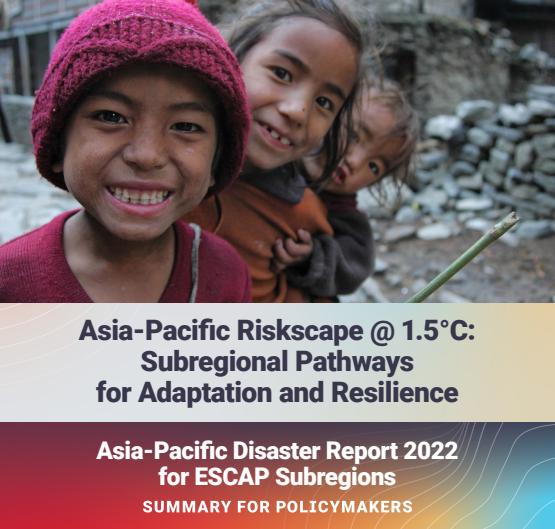
"Asia-Pacific Disaster Report 2022 for ESCAP subregions: Summary for Policymakers builds on ESCAP’s Asia Pacific Disaster Report 2021, Asia and the Pacific SDG Progress Report 2022 and the latest reports (2021/2022) issued by the Intergovernmental Panel on Climate Change (IPCC). IPCC reports show a startling increase in global warming impacts in that, as we move from 1.5 to 2 degrees of warming, the risks to economies and people increase exponentially. It is worth noting that, while the overarching trends in climate change are global, they translate into different warming trends and impacts for each sub-region of Asia and the Pacific. Therefore, all sub-regions require their own risk profiles with sub-regional specificities in order to develop tailor-made resilience pathways to tackle multiple hazards.
ESCAP has downscaled the global models of warming to Asia and the Pacific and its sub-regions. The Asia Pacific Disaster Report 2022 for ESCAP Subregions shows that under all climate-change scenarios, and in comparison to global averages, Asia and the Pacific will be most impacted by heavy precipitation, followed by agricultural drought, hot temperatures/heatwaves, and warming winds with intensifying tropical cyclones. Further, the Report highlights how each ESCAP subregion will be impacted in the medium to long term climate scenarios, and where the new hotspots of exposure and vulnerability to climate-induced, cascading multi-hazard scenarios will be created. This analysis highlights the sub-regional specificities which could otherwise be masked by the regional analysis."
Access Link: https://ikcest-drr.osgeo.cn/static/upload/7a/7a14cb14-b5aa-11ee-a9f6-00163e059c63.pdf
Comment list ( 0 )
